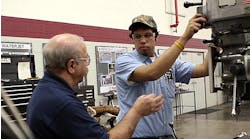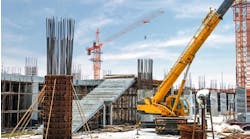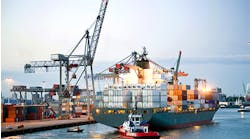The term “maintenance” typically has negativ connotations. Whether the word makes one think of a broken machine, or a repair need, it is commonly linked to negative images and pessimistic ideas.
On the contrary, maintenance is defined as “the work of keeping something in proper condition; upkeep.” It is a core function of any organization, where equipment must be maintained: a manufacturing plant, a facility, or a utility company. If your production machine is down, and you cannot deliver products or services, serious consequences can result: you may lose customers, money, and business.
In a manufacturing plant, an equipment breakdown could mean poor service to other departments or customers, resulting in loss of money.
However, maintenance often is the first department to be cut when companies downsize, essentially because it’s at a very low priority level for most organizations. When such moves are analyzed, questions such as “how many senior managers come from maintenance?” or “how many companies support maintenance R&D?” are answered with “very few, if any.”
To view maintenance in a positive light, it is important to see it as a profit center, instead of a cost center. A cost-center approach is strictly concerned with adhering to the budget, decreasing expenses as much as possible.
In contrast, the profit-center model recognizes that investment and operating costs can be allocated to improve efficiency. The increased efficiency naturally results in higher profits.
It is clear that companies must take a profit center approach to maintenance. There are numerous ways to do this. One such is through the “product quality with zero effort” approach. Just as professional athletes must train to keep their bodies in excellent shape to perform, this approach stresses keeping the machinery and facilities in the best possible condition. Thus, producing higher-quality products will lead to a lower return rate and typically profits increase.
Another way is through overall equipment effectiveness or OEE. OEE consists of three factors: availability (the percentage of time that the machine is available for production); utilization (the rating of the machine provided by the manufacturer based on the design specification rating); and quality rate (how good the final product is).
Unfortunately, North American companies average an OEE of 40%, which is less than half of what is acceptable by world-class standards. Whereas many companies simply buy newer machinery, it is much more cost-effective to maintain the equipment you currently have. Higher OEE means higher machine capacity, which in turn means higher output leading to increased sales capacity. This is a good example of how maintenance can be turned into a profit center.
Preventive maintenance is another approach for turning maintenance into a profit center. If appropriate preventative maintenance was in place, downtime would be minimized, saving a great deal of money - turning maintenance into a profit center.
Companies can improve their maintenance approach — turning it into a profit center — by using a computerized maintenance management system (CMMS). A CMMS is a software program designed to assist in planning, management, and administrative functions that are required for effective maintenance. These functions include generating, planning, and reporting work orders; developing a traceable history; and recording parts transactions. CMMS can be used to assure the high quality of both the equipment condition and the output. It is not just a means of controlling maintenance.
CMMS is a primary tool that improves the productivity of maintenance, offering many benefits, such as increasing labor productivity, equipment availability, and extending equipment life.
Of the benefits, the most significant is increasing labor productivity. If the system provides the employees with a planned job, the procedures, needed parts, and tools, the employees will be able to work without delays or interruptions. Also, employees will work more safely because the job plans will include all safety procedures.
CMMS provides more tangible benefits, like reducing overtime, outside contract work, maintenance backlog, and cost per repair. It can improve morale and service, and can reduce paperwork and follow-up required by the supervisor.
Inventory control and environmental control can influence the effectiveness of CMMS. The proper inventory control can reduce inventory costs, lowering excess inventory and improving the availability of parts. Experience has shown that a reduction of 10-15% in parts stocked and consumed is possible. Improving product quality results mainly from performing adequate predictive and preventative maintenance, keeping the equipment in good condition and enhancing the product’s quality.
Safety and compliance issues are important in terms of environmental control. Preventing accidents and injuries as the result of proper procedures (documented by a CMMS) can save a significant amount of money.
Taking a “cost-center approach” to maintenance is not unusual; many manufacturing companies continue to do it. But, maintenance is an important activity that should be viewed as a profit center, not simply as an added expense. It is an important investment in a company’s future.
Kris Bagadia is the president of Peak Industrial Solutions L.L.C., Brookfield, WI. Visit www.cmmsmadeeasy.com.








